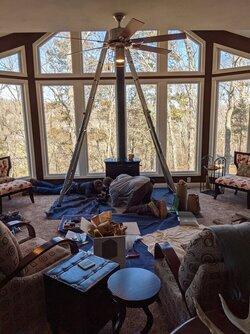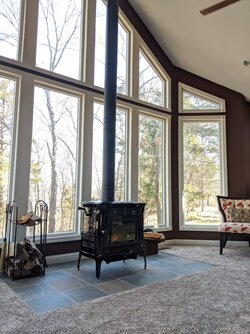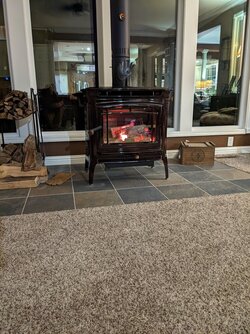Thanks for your insight I appreciate it.And the glass on the door will stay cleaner than on the King model.
Do you think the princess would work well and with a good draft?
Please keep in mind that this would be with piping run of 7 ft above the stove into two 45's and a horizontal 1.5' run of stove pipe into the existing chimney.
The top of the exterior chimney has a no permanent massive concrete cap on it. I may not be able to fit any kind of stainless insulated chimney pipe liner into it due to this permanent concrete structure.
See attached chimney pics from my original post to see what I'm dealing with.
Thanks again for your advice.




